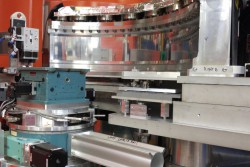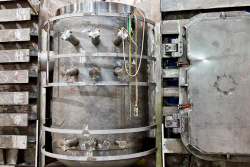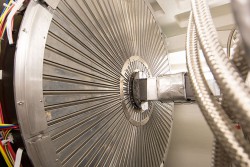Magnetic and crystal structure studies and phase analysis
High Pressure Science
The application of high pressure is an extremely powerful tool to induce and understand unique changes and properties of many materials. When high pressure is coupled with neutron scattering it makes it possible to address new challenges in many area of science. For example, the magnetic phase diagram of many materials exhibits unique changes with pressure. Such magnetic structures can only be directly studied with neutrons. Similarly, geology and other planetary sciences rely on pressure apparati to replicate in laboratory conditions the high pressure conditions that exist inside the planetary cores. Since many geologically relevant materials consist (partially) of light elements, neutron scattering is the key tool for such studies. Furthermore, high pressure allows for the synthesis of novel functional materials that could not be formed at ambient conditions. Understanding such synthesis through in situ study is key for its eventual exploitation in industrially more advantageous manners. In addition, high pressure can even play a critical role in biological sciences providing important insights for improving food processing or protein stability.
A key in the study of these many various systems and materials under high pressure is a suitable pressure cell. Such cells are often not commercially available and their development is a highly scientifically driven effort in itself. Over the years, ORNL has developed several high pressure cells that have been improved or adapted to new and better uses and applications. The development of unique and new world leading pressure cells is still a technological and scientific focus point.
As ORNL scientists continue to strive for new records, many new and improved pressure cells are being made available for use across many beamlines and scientific disciplines in the neutron scattering user program.






















